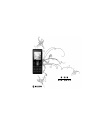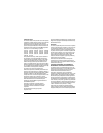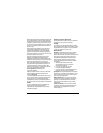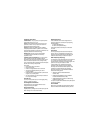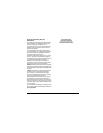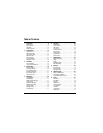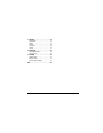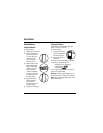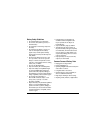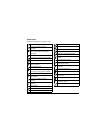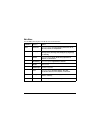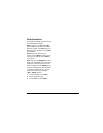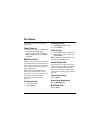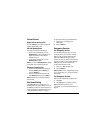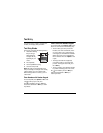
3
Although the SAR is determined at the highest certified power
level, the actual SAR level of the phone while operating can
be well below the maximum value. This is because the phone
is designed to operate at multiple power levels so as to use
only the power required to reach the network. In general, the
closer you are to a wireless base station antenna, the lower
the power output.
Before a phone model is available for sale to the public, it
must be tested and certified by the FCC that it does not
exceed the limit established by the government-adopted
requirement for safe exposure. The tests are performed in
positions and locations (e.g., at the ear and worn on the body)
as required by the FCC for each model.
Body-worn measurements differ among phone models,
depending upon availability of accessories and FCC
requirements. While there may be differences between the
SAR levels of various phones and at various positions, they all
meet the government requirement for safe exposure.
The FCC has granted an Equipment Authorization for this
model phone with all reported SAR levels evaluated as in
compliance with the FCC RF emission guidelines. SAR
information on this model phone is on file with the FCC and
can be found under the Display Grant section
www.fcc.gov/oet/ea after searching on the
FCC ID: OVF-K33BIC03.
Additional information on SAR can be found on the Cellular
Telecommunications and Internet Association (CTIA)
web-site at www.ctia.org.
* In the United States and Canada, the SAR limit for mobile
phones used by the public is 1.6 watts/kg (W/kg) averaged
over one gram of tissue. The standard incorporates a
substantial margin of safety to give additional protection for
the public and to account for any variations in measurements.
Caution
The user is cautioned that changes or modifications not
expressly approved by the party responsible for
compliance could void the warranty and user’s authority
to operate the equipment.
Optimize your phone’s performance
Use the guidelines in this guide to learn how to optimize the
performance and life of your phone and battery.
Air Bags
If you have an air bag, DO NOT place installed or portable
phone equipment or other objects over the air bag or in the air
bag deployment area. If equipment is not properly installed,
you and your passengers risk serious injury.
Medical devices
Pacemakers—Warning to pacemaker wearers: Wireless
phones, when in the ‘on’ position, have been shown to
interfere with pacemakers. The phone should be kept at least
six (6) inches away from the pacemaker to reduce risk.
The Health Industry Manufacturers Association and the
wireless technology research community recommend
that you follow these guidelines to minimize the potential
for interference.
• Always keep the phone at least six inches
(15 centimeters) away from your pacemaker
when the phone is turned on.
• Do not carry your phone near your heart.
• Use the ear opposite the pacemaker.
• If you have any reason to suspect that interference is
taking place, turn off your phone immediately.
Hearing aids—Some digital wireless phones may interfere
with hearing aids. In the event of such interference, you may
want to consult your service provider or call the customer
service line to discuss alternatives.
Other medical devices—If you use any other personal
medical device, consult the manufacturer of the device to
determine if it is adequately shielded from external RF
energy. Your physician may be able to help you obtain
this information.
In health care facilities—Turn your phone off in health
care facilities when instructed. Hospitals and health care
facilities may be using equipment that is sensitive to
external RF energy.



